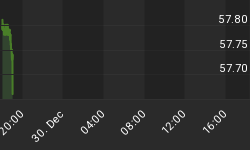Last September saw Australia's trade deficit nearly double, leaping from $324 million in August to $646 million in September. In addition, exports dropped by 1 per cent to $17.7 billion. Despite these figures some economists are making still Pollyannish statements about resources helping out by expanding early next year. How can anyone with any genuine economic training by optimistic about these figures. Month after month and year after year we have been running a deficit.
Now I know that some will argue that a trade deficit in itself does not matter. In a sense this is true. But these observers imagine that the deficit is the product of undistorted markets where all prices are truly functional. This is one of the reasons why some commentators have deduced that Australia must suffer a higher level of foreign ownership of industry so long as Australians rely on accumulating debt to bolster their standard of living. At the root of this view is the assumption that free trade is the cause of the deficit. This is very bad economics.
Trade occurs because of international differences in prices. This observation should be the starting point for any debate on the flow of goods and service. So what we need to do is examine those forces that influence the prices of exports and imports. In a free market where money stocks and therefore currencies are stable exchanges rate will be stable. The key here is money supply. Once any country begins to expand its money stock while other remain constant there will be a downward pressure on the exchange rate. In plain English, the inflating country will find that it currency will depreciate against other currencies.
Where the exchange rate is falling imports become more expensive and exports cheaper. Changes in the money supply have therefore also brought about an unfavourable change in the terms of trade. Now this assumes that the exchange rate is allowed to freely float. However, if a country tries to maintain an overvalued currency its exports will decline and imports will increase. But imports must be paid for. Although it is true that exports are ultimately the price of imports money is the intermediary through which this process is accomplished. But where the currency is overvalued payments must come through the capital account. In other words, so long as the currency remains overvalued the country will continue to accumulate a foreign debt. This is has now happened to Australia. In December 2002 net foreign debt stood at $354 billion: it now stands at $494 billion.
Therefore the problem is not free trade, subsidised imports or and an 'insatiable rise in consumer spending', it is a loose monetary policy. (Although a world of rapidly changing money supplies and severe political uncertainty would complicates the situation it would still not halt the fundamental economic forces at work). Those who focus on consumer spending and debt never stop to ask where this debt is coming from. They would never stop to ponder how debt can actually exceed what has been saved. The answer is credit expansion. From March 1996 to last August bank deposits expanded by 133 per cent while M1 grew by 105 per cent. Furthermore, between February this year and September the Reserve Bank increased its assets by 25 per cent, suggesting that the monetary growth is still very loose. Yet not a single member of our so-called economic commentariat considers these figures to be important.
The Reserve Bank has kept interest rates artificially low which in turned caused the banking system to recklessly expand credit thus fuelling the housing boom, domestic borrowing and the demand for imports.
Note: Once again I am not saying anything new. In 1801 Walter Boyd's letter to Prime Minister Pitt triggered a very sophisticated debate on the link between money supply and the balance of trade. This debate continued for some years and became known as the 'Bullion Controversy'.
















